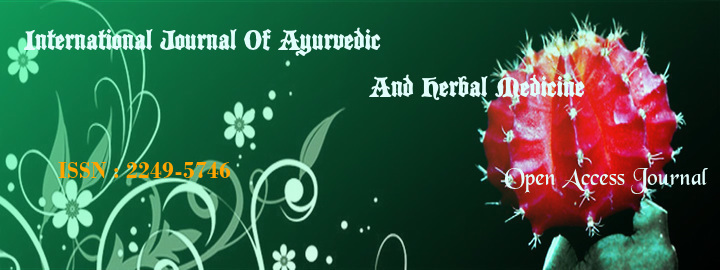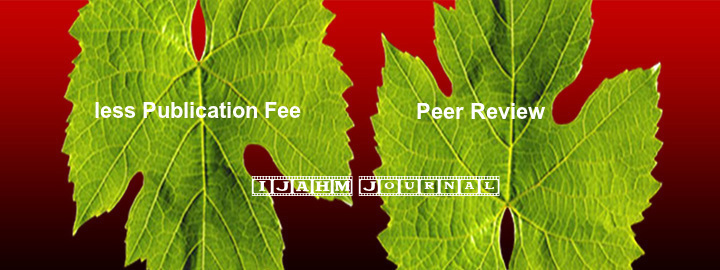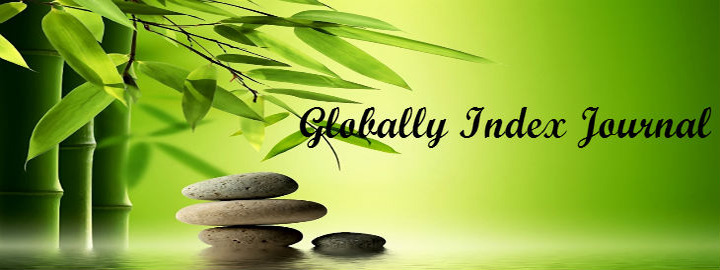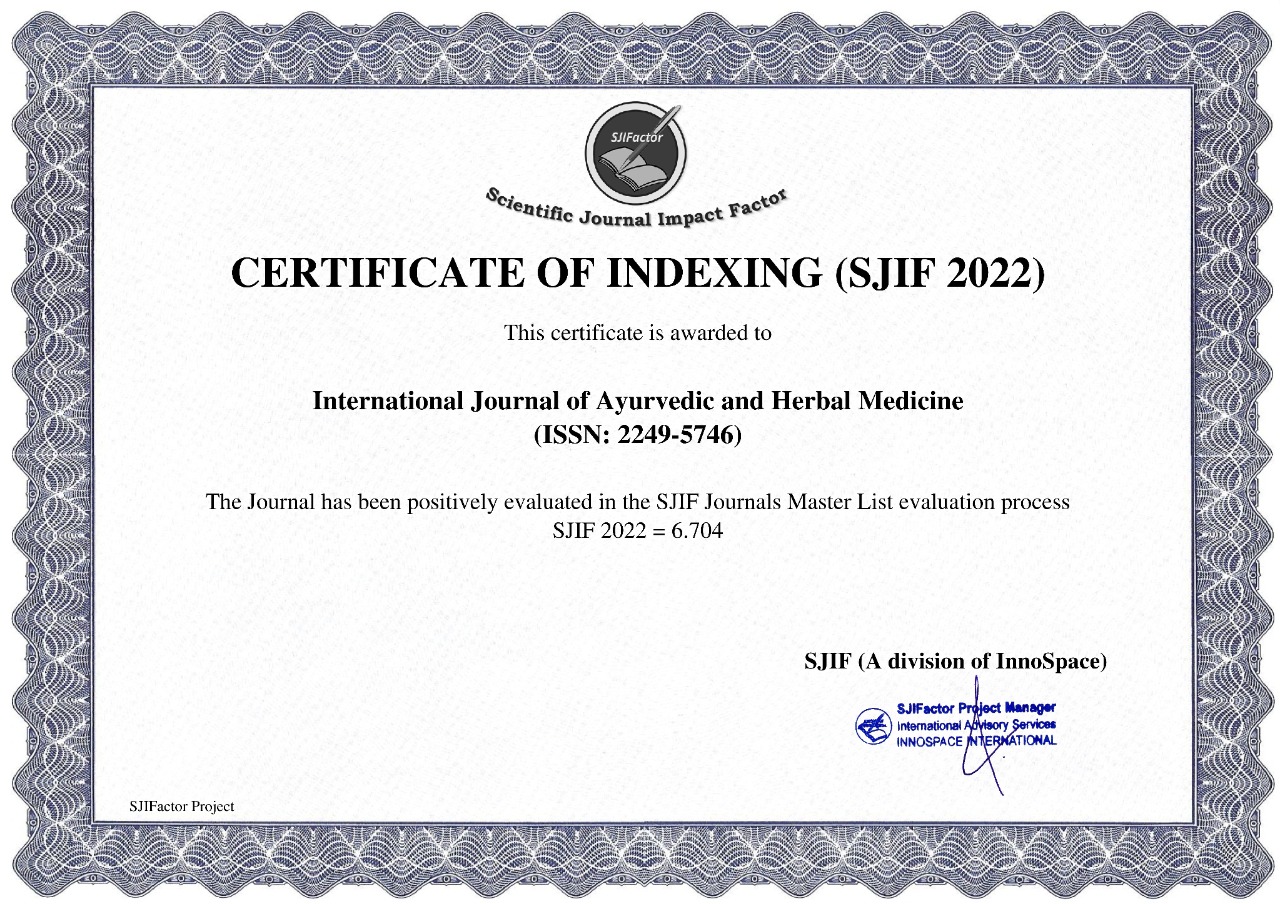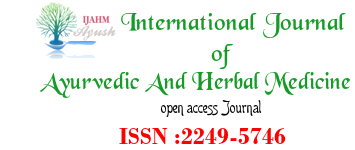


1Dr. Rajni Rathore ,2 Dr. Ramanand ,3 Prof. Makhan Lal
1P.G. Deptt. Of Dravyaguna, State Ayurvedic College Lucknow
2 Lecturer of P.G. Deptt. of Dravyaguna S.A.C. Lucknow.
3Prof. and HOD of P.G. Deptt. of Dravyaguna S.A.C. Lucknow
ABSTRACT
In C. Su. 4 there are 4 dasemani or mahakashaya of suffix ya they are balya, varnya, kanthya, hridya. Varnya word is explained as:
Varna- means colour and Ya suffix denotes “wholesomeness” dividable two broad divisions-
Balya, varnya- Related to corporeal notions.
Kanthya, Hridya- Related to corporeal organs.
Those medicines or herbs which bring about and establish the original colour and complexion of an individual are called varnya . The great texts in Ayurveda, the charak samhita , stated a group of ten medicinal plants known as varnya mahakashya that can be used to obtain glowing complexion. It includes Sweta Chandan, Nagkesar, Padmaka, Ushira, Madhuka, Manjistha, Sariva, Payasya, Sita, Lata. These herb can be used individually combine and also externally or internally.
The present paper aims to review focuses on Charakokta varnya mahakashaya as a natural and safe remedy for getting fairer skin and also for the detoxification of blood in rakta pradosaj vikaar.
Key words: Varnya Mahakashaya, complexion, Colour, Dasemani, Herbs.
REFERENCES
1. ShastriKashinathPt, The CarakSamhita Of Agnivesa Revised By Carak And Drdhabala, Part -1, ChaukhambhaBharatiAcademy,Varanasi (U.P.), Edition-2009, Sutra Sthan- 4 ,25
2. Charak Samhita sutra sthana chapter 4th and 25thof Agnivesh redacted by Drdhabala edited by Prof. PriyaVrat Sharma published by ChaukhambaBharti Academy, Varanasi (U.P)
3. ShastriAmbikadutta, ShushrutaSamhita Of MaharshiSusruta Edited With Ayurveda-TattvaSandipika, Part- 1, ChaukhambhaSanskrit Sansthan, Varanasi (U.P.).
4. Bhav PrakashNighantu of Bhav Mishra by Dr. Krishna Chandra chunekar published by ChaukhambaBharti Academy, Varanasi (U.P)
5. Sharma P.V.DravyaGuna Vijnana-Vol-2, ChaukhambhaBharati Academy, Varanasi (U.P.)
6. DravyagunaVijanam part 2nd of J.L.N.Sastry published by ChaukhambaBharti Academy, Varanasi (U.P.)
7. Gupta KavirajaAtrideva, Astangahrdayam of vagbhata edited by VaidayaYadunandanaUpadhayaya published by Chaukhambaprakashan, Varanasi (U.P.)
8. Chourasia OP and Rao J. Tirumala; Anti bacterial Efficacy of Some Indian Essential Oils, Perfumery and Cosmetic, 1987, 68(Jahrgang, Nr.9/87), 564 -566.
9. Shankaranaryana KH et al; Antibacterial Activity of Sandal bark Tannins against Staphllococcusaureus,VanVigyan, 1986, 24(3&4),120-121. 22. Kaur M et al; Skin cancer Chemopreventive
10. Sivaramakrishnan VR & Shankaranarayana KH; Investigation on the insecticidal properties of plant extractives-I testing of new medicinal oils, HESP from spent sandalwood powder on insects, Science & culture, 1990. 56(03), 124- 127.
11. Shankaranaryana KH & Parathasarthi K; KESP: a new essential oil from the acid hydrolysis of spent sandalwood, Perfumer & Flavorist, 1985, 10,60.
12. Albert C. Chibnall et al, Biochem J, 1981-1986, oct 1937.
13. Subramanyum RM. NV subbaroolate fatty acid composition of nahor (MesuaFerrae Linn) seed oil. J Richer Imagerie Med. 1977;(12):97-9.
14. Prashanth KV, Chauhan NS, Padh H, Rajani M. Search for antibacterial and anti fungal agents from selected indan medicinal plant. J Ethnopharmacol. 2006;(107):182-8.
15. Rana AYKM, Khanam JA, Asad-Ud-Daula M. Antineoplastic Screening of Some Medicinal Plants against Ehrlich Ascites Carcinoma in Mice. J Med Sci. 2004;(4):142-5.
16. Gopalakrishnan C, Shankarnarayanan D, Nazimudeen SK, Viswanathan S, Kameswaran L. Anti-inflamatory and CNS depressant activities of xanthones from Calophylluminophyllum and Mesuaferrea. Ind J Pharmacol.1980;(12):181-91.
17. Saxena A, Dixit S, Aggarwal S, Seenu V, Prashad R, Bhushan SM, et al. An ayurvedic Herbal compound to reduce toxicity to Cancer chemotherapy: A randomized controlled trail. Indian J Med PaediatrOncol. 2008;(29):11-18.
18. Dr. J.L.N Sastry, DravyagunaVijana, Vol-2, forward by prof. K.C.Chunekar, ChaukhambaOrientalia 2005, pg-77.
19. V.Shubhra Devi et al. IJPSR 2010;1 (9): 120-124.
20. Last accessed on 2014 Mar 02]. Available from: http://www.konarkindex.com/index.php/mulethi .
21. Last accessed on 2014 Feb 20]. Available from: http://www.herbs-treat and taste.blogspot.in
22. Health Benefits of Mulethi or Liquorice. [Last accessed on 2014 Apr 18]. Available from:http://www.thehealthsite.com/
23. Vaibhav S, Lakshaman K. Tyrosinase enzyme inhibitory activity of selected Indian herbs. Int J Res Pharm Biomed Sci. 2012;3:977–82
24. http://www.ibiblio.org/pfaf/cgi-bin/arr_html?Rubia+cordifolia. Date of retrival: 23 sep 2007
25. Prabhajit K, Bikram S, Subodh K, Satwinderjeet K. In vitroevaluation on free radical scavenging activity of Rubiacordifolia. J Chin Clin Med. 2008;3:5.
26. G. Kumar, K. Jayaveera, C.K. Ashok, T. Bharathi, S.P. Umachigi, S. Vrushabendra Evaluation of antioxidant and antiacne properties of terpenoidal fraction of Hemidesmusindicus (Indian sarsaparilla) – Internet journal of aesthetic & anti aging medicine. 2008 1 ( 1)
27. Navneet B. Gadge and Sunil S. Jalalpure ,Natriuretic and saluretic effects of Hemidesmusindicus R. Br. root extracts in rats. Indian J Pharmacol. 2011 Nov-Dec; 43(6): 714–717.
28. Kotnis MS, Patel P, Menon SN, Sane RT. Renoprotective effect of Hemidesmusindicus, a herbal drug used in gentamicininduced renal toxicity. Nephrology (Carlton) 2004;9:142–52.
29. Joseph, P, Remington, Horatio and Wood, C. 1918. The Dispensatory of the United States of America. http://www.ibiblio.org/herbmed/eclectic/us disp/hemidesmus
30. Abdullah S, Gobilik J and Chong KP. In vitro antimicrobial activity of Cynodondactylon (L) Pers (bermuda) against selected pathogens. Developments in Sustainable Chemical and Bioprocess Technology 2013 :227-237.
31. Garg VK and Paliwal SK. Anti-Inflammatory activity of aqueous extract of Cynodondactylon. Int J Pharmacol 2011; 7(3): 370-375.
32. Krishnamoorthy M and Ashwini P. Anticancer activity of Cynodondactylon L extract on Ehrlich ascites carcinoma. J Environ Res Dev 2011; 5(3):551-557.
33. Saroja M and Annapoorani S. Antitumor activity of methanolic extract of Cynodondactylon leaves against Ehrlich ascites induced carcinoma in mice. J AdvSci Res 2012; 3(1):105-108.
34. Nayanatara AK, Akshatha A, Kottari S, Soofi AA, Rejeesh EP, Bhagyalakshmi K, Shetty S, Kini RD and Pai SR. Effect of Cynodondactylon extract on estrous cycle and reproductive organs in female Wistar rats. International Journal of Analytical, Pharmaceutical and Biomedical Sciences 2012; 1(3): 10- 15.
35. Nayanatara AK, Kottari S, Alva A, Soofi AA, Rejeesh EP, Bhagyalakshmi K, Shetty SB and Pai SR. Effect of aqueous extract of Cynodondactylon on reproductive hormones and reproductive organ weight of female Wistar rats. IJBPAS 2012; 1(8): 1065-1076.
36. Babu KS, Shaker IA, Kumaraswamy D, Saleembasha S and Sailaja I. Indigenous effect of Cynodondactylon in experimental induced ulcers and gastric secretions. Int Res J Pharm 2012; 3(5):301-304.
37. Patil MB, Jalalpure SS, Prakash SS and Kokate CK. Antiulcer properties of alcoholic extract of Cynodondactylon in Rats. International Society for Horticultural Science 2005; dio10.17660/actahortic.680.16.
38. Rai PK, Jaiswal D, Rai DK, Sharma B and Watal G. Antioxidant potential of oral feeding of Cynodondactylon extract on diabetes-induced oxidative stress. J Food Biochem 2010; 34: 78-92.
39. Singh SK, Kesari AN, Gupta RK, Jaiswal D and Watal G. Assessment of antidiabetic potential of Cynodondactylon extract in streptozotocin diabetic rats. J Ethnopharmacol 2007; 114(2): 174-179.
40. Jarald EE, Joshi SB and Jain DC. Antidiabetic activity of aqueous extract and non-polysaccharide fraction of Cynodondactylon Pers. Indian J ExpBiol 2008; 46(9): 660-667
41. Pal DK. Determination of brain biogenic amines in Cynodondactylon L. (Pers) and Cyperusrotundus L treated mice. Int J Pharm PharmSci 2009; 1: 190-197.
42. Pal D. Evaluation of CNS activities of aerial parts of CynodondactylonPers in mice. Drug Research 2008; 65(1): 37-43.
index







